How to Interpret Pad Mounted Transformer Specifications for Project Design and Procurement?
Are you struggling to make sense of pad mounted transformer specifications? You’re not alone. Many engineers and procurement professionals find these technical documents overwhelming. But what if you could easily decode these specs and use them to make confident project decisions?
A pad-mounted transformer specification sheet outlines key electrical, mechanical, and environmental parameters such as rated voltage, kVA capacity, impedance, cooling method, and installation requirements. It includes connection diagrams, dimension drawings, protection features, and applicable standards like IEC 60076 or IEEE C57.12.34. Understanding these specifications is crucial for ensuring project compatibility, installation safety, and long-term performance. Misinterpreting details like vector group, tap changer type, or cable termination configuration can lead to equipment mismatch, site rework, or project delays.
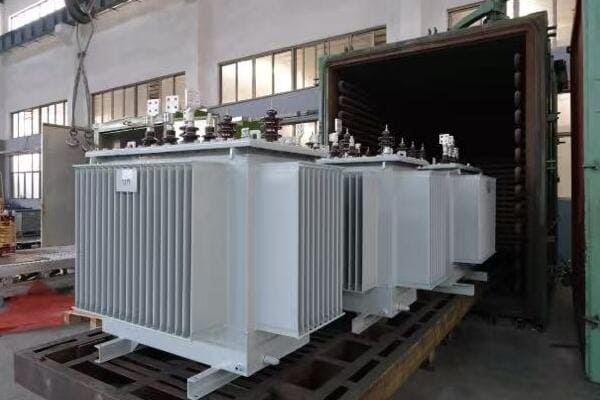
In this comprehensive guide, I’ll walk you through the essential elements of pad mounted transformer specifications. We’ll explore what each parameter means in practice, how to interpret technical drawings, and common pitfalls to avoid during procurement. Whether you’re designing a new residential development or upgrading an existing power distribution system, this article will provide valuable insights to help you make informed decisions and ensure project success.
What Is a Pad Mounted Transformer Specification Sheet and Why It Matters?
Have you ever received a transformer spec sheet and felt overwhelmed by the technical jargon? You’re not alone. Many professionals in the power industry struggle to interpret these crucial documents. But why are these specification sheets so important, and what key information do they contain?
A pad mounted transformer specification sheet is a comprehensive technical document that details the transformer’s electrical, mechanical, and environmental characteristics. It typically includes parameters like rated power (kVA), voltage ratings, impedance, vector group, cooling method, and physical dimensions. These sheets also contain wiring diagrams, layout drawings, and clearance requirements. Understanding this document is crucial for proper transformer selection, project design, and procurement processes. Misinterpretation can lead to costly errors in equipment compatibility, site preparation, and regulatory compliance.
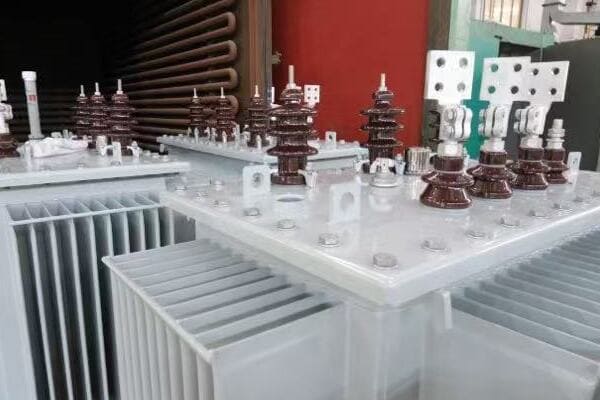
Key Components of a Transformer Specification Sheet
Let’s break down the main elements:
- Electrical Parameters
- Mechanical Specifications
- Environmental and Safety Features
- Drawings and Diagrams
- Standards and Certifications
Electrical Parameters
Core performance indicators:
- Rated power (kVA)
- Primary and secondary voltage levels
- Impedance percentage
- Vector group (e.g., Dyn11)
- Tap changer details (if applicable)
I recently worked on a project where misreading the vector group notation led to compatibility issues with the existing distribution system. This experience underscored the importance of understanding even seemingly minor details in the spec sheet.
Mechanical Specifications
Physical characteristics and installation requirements:
- Dimensions (length, width, height)
- Weight (transport and installed)
- Mounting and foundation requirements
- Cable entry and termination details
During a recent residential development project, we faced challenges because the transformer’s actual dimensions slightly exceeded those in the initial spec sheet. This discrepancy led to last-minute adjustments in the pad design, highlighting the need for thorough spec review.
Environmental and Safety Features
Ensuring reliable and safe operation:
- Cooling method (e.g., ONAN, ONAF)
- Ingress protection (IP) rating
- Noise level specifications
- Fire safety features
Here’s a quick overview of common environmental specifications:
| Feature | Typical Specification | Importance |
|---|---|---|
| Cooling Method | ONAN (Oil Natural Air Natural) | Affects installation and maintenance |
| IP Rating | IP54 or higher | Critical for outdoor installations |
| Noise Level | <50 dB at 1m | Important for residential areas |
| Operating Temperature | -25°C to +40°C | Ensures reliability in various climates |
Drawings and Diagrams
Visual representations for clarity:
- Wiring diagrams
- Outline drawings with dimensions
- Foundation and clearance requirements
Standards and Certifications
Ensuring compliance and quality:
- Applicable standards (e.g., IEC 60076, IEEE C57.12.34)
- Type test certificates
- Quality management certifications (e.g., ISO 9001)
Key points about transformer specification sheets:
- They provide comprehensive technical details essential for project planning
- Electrical parameters define the transformer’s core functionality
- Mechanical specs are crucial for site preparation and installation
- Environmental features ensure long-term reliability and safety
- Drawings and standards compliance information aid in proper implementation
In my experience, thoroughly understanding these specification sheets is crucial for project success. I recall a case where a client overlooked the tap changer specifications in a transformer for a solar farm project. This oversight led to voltage regulation issues that required costly post-installation modifications. By carefully reviewing each section of the spec sheet, we could have anticipated and prevented this problem.
For example, in a recent smart grid upgrade project, we used the detailed vector group and impedance information from the spec sheets to ensure seamless integration with the existing network infrastructure. This attention to detail in the specification review process was key to achieving the project’s power quality and reliability goals.
As we move on to discuss key technical parameters in more depth, keep in mind the critical role these specification sheets play in every stage of a transformer project, from initial design to final installation and commissioning.
Key Technical Parameters and What They Mean in Practice?
Are you finding it challenging to connect transformer specifications to real-world applications? You’re not alone. Many engineers struggle to translate technical parameters into practical design decisions. But which specifications are most critical, and how do they impact your project’s performance and safety?
Key technical parameters in pad mounted transformer specifications include rated power (kVA), voltage ratings, impedance percentage, vector group, and cooling method. Rated power determines the transformer’s load capacity, crucial for meeting current and future demand. Voltage ratings (e.g., 11kV/400V) must match your distribution system. Impedance affects short-circuit currents and protection system coordination. Vector group (e.g., Dyn11) influences grounding and parallel operation compatibility. Cooling method (e.g., ONAN) impacts noise levels, losses, and space requirements. Understanding these parameters is essential for proper transformer selection, system design, and long-term operational efficiency.
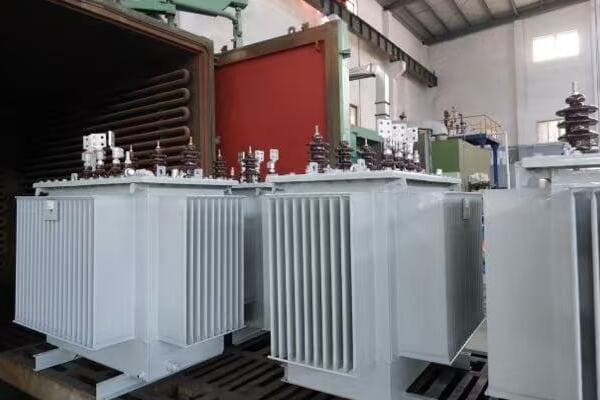
Critical Technical Parameters Explained
Let’s examine the main specifications and their practical significance:
- Rated Power (kVA)
- Voltage Ratings
- Impedance Percentage
- Vector Group
- Cooling Method
Rated Power (kVA)
Determining load capacity:
- Defines the maximum power the transformer can handle
- Critical for meeting current needs and future growth
- Affects physical size and weight of the transformer
I recently worked on a residential development project where we initially specified a 500 kVA transformer based on current load calculations. However, after considering future electric vehicle charging needs, we opted for a 750 kVA unit to accommodate long-term growth without requiring a costly upgrade later.
Voltage Ratings
Matching system requirements:
- Primary voltage (e.g., 11kV, 22kV) must match utility supply
- Secondary voltage (e.g., 400V) must suit end-user equipment
- Consider voltage regulation range for varying load conditions
During a recent industrial park project, we had to carefully select transformers with the correct primary voltage (33kV) to match the local utility supply while ensuring the secondary voltage (400V) met the diverse needs of various manufacturing tenants.
Impedance Percentage
Influencing system behavior:
- Affects short-circuit current levels
- Impacts voltage regulation under load
- Critical for coordinating protection systems
Here’s a quick guide to impedance percentages:
| Impedance % | Typical Application | Impact on System |
|---|---|---|
| 4% – 5% | Distribution transformers | Moderate fault currents, good voltage regulation |
| 6% – 8% | Larger power transformers | Lower fault currents, suitable for weaker grids |
| >8% | Special applications | Very low fault currents, may require additional voltage support |
Vector Group
Defining winding connections:
- Indicates phase shift between primary and secondary
- Affects system grounding and fault behavior
- Important for parallel operation of transformers
Cooling Method
Managing temperature and efficiency:
- ONAN (Oil Natural Air Natural): Most common for pad mounted units
- ONAF (Oil Natural Air Forced): For higher capacities or hot climates
- Impacts noise levels, losses, and maintenance requirements
Key points about technical parameters:
- Rated power must be carefully selected to meet both current and future needs
- Voltage ratings must precisely match system requirements
- Impedance percentage affects system protection and voltage regulation
- Vector group is crucial for system compatibility and parallel operation
- Cooling method influences performance, efficiency, and environmental impact
In my experience, understanding these parameters is crucial for avoiding costly mistakes. I recall a project where a mismatch in vector group notation led to issues when paralleling new transformers with existing units. This oversight resulted in circulating currents and reduced efficiency. By paying close attention to these technical details, we could have prevented this problem and ensured seamless integration.
For example, in a recent smart grid project, we utilized the impedance data from transformer specifications to accurately model the distribution network. This allowed us to optimize protection settings and improve overall system reliability. The cooling method specifications also helped us design appropriate ventilation for transformer vaults, ensuring long-term reliability in urban installations.
As we move on to discuss how to interpret transformer drawings and diagrams, keep these key parameters in mind. Understanding their practical implications will help you make more informed decisions when reviewing technical documentation and planning your power distribution projects.
Understanding Drawings: Wiring Diagrams, Layouts, and Clearance Requirements?
Are you struggling to make sense of the various drawings included in pad mounted transformer specifications? You’re not alone. Many professionals find these technical illustrations challenging to interpret. But why are these drawings so crucial, and how can you extract the vital information they contain?
Transformer drawings, including wiring diagrams, layout plans, and clearance requirements, are essential for proper installation and maintenance. Wiring diagrams show electrical connections, crucial for system integration. Layout drawings provide physical dimensions and component locations, vital for site preparation. Clearance requirements ensure safe operation and maintenance access. Understanding these drawings is critical for avoiding installation errors, ensuring compliance with safety standards, and facilitating efficient maintenance. Key aspects to focus on include cable entry points, bushing arrangements, grounding connections, and minimum clearance zones around the transformer.
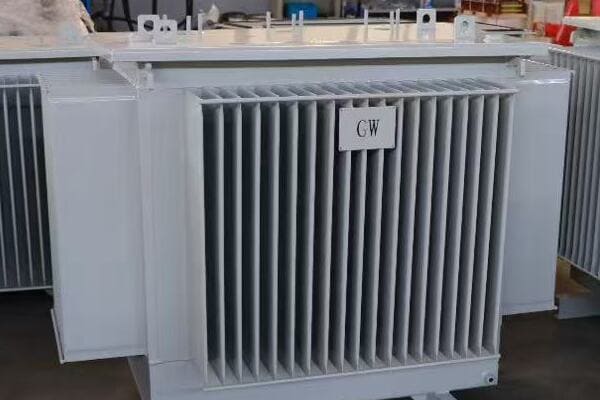
Key Elements of Transformer Drawings
Let’s examine the main types of drawings and their significance:
- Wiring Diagrams
- Layout Drawings
- Clearance Requirement Illustrations
- Foundation Plans
- Accessory Placement Drawings
Wiring Diagrams
Electrical connection details:
- Show primary and secondary winding connections
- Indicate tap changer positions (if applicable)
- Highlight grounding points and methods
I recently worked on a project where misinterpreting the wiring diagram led to incorrect phasing on the secondary side. This experience underscored the importance of carefully reviewing these diagrams, especially when dealing with non-standard vector groups.
Layout Drawings
Physical arrangement and dimensions:
- Provide overall dimensions (length, width, height)
- Show locations of bushings, cable entries, and accessories
- Indicate center of gravity for lifting and transportation
During a recent substation upgrade, we relied heavily on detailed layout drawings to plan the placement of new pad mounted transformers in a space-constrained area. The accurate dimensions allowed us to optimize the layout and ensure proper clearances.
Clearance Requirement Illustrations
Safety and accessibility guidelines:
- Specify minimum distances from walls, fences, and other equipment
- Indicate required working spaces for maintenance
- Show arc flash boundaries for safety planning
Here’s a quick overview of typical clearance requirements:
| Area | Typical Clearance | Reason |
|---|---|---|
| Front (Door Side) | 3-4 meters | Access for maintenance and cable connections |
| Rear | 1-2 meters | Ventilation and limited access |
| Sides | 1-1.5 meters | Ventilation and minor maintenance |
| Top | 2-3 meters | Safety and overhead clearance |
Foundation Plans
Installation base details:
- Show dimensions and structure of the concrete pad
- Indicate cable trench locations and sizes
- Specify anchoring points and methods
Accessory Placement Drawings
Locations of additional components:
- Show positions of gauges, valves, and monitoring devices
- Indicate placement of nameplates and warning signs
- Detail locations of lifting lugs and jacking points
Key points about interpreting transformer drawings:
- Wiring diagrams are crucial for correct electrical connections
- Layout drawings provide essential information for site preparation
- Clearance requirements ensure safe operation and maintenance
- Foundation plans are vital for proper installation and stability
- Accessory placement drawings aid in complete and correct assembly
In my experience, thorough understanding of these drawings is essential for successful project execution. I recall a case where overlooking a detail in the foundation plan led to issues with cable entry alignment. This oversight resulted in additional on-site modifications, highlighting the importance of carefully reviewing all provided drawings.
For example, in a recent smart grid project, we used the detailed wiring diagrams to plan the integration of advanced monitoring systems with the transformers. The clear representation of terminal connections and auxiliary contacts in these diagrams was crucial for seamless integration of smart grid functionalities.
As we move on to discuss common specification mistakes and how to avoid them, keep the importance of these drawings in mind. Accurate interpretation of technical illustrations is key to avoiding costly errors and ensuring smooth project implementation.
Common Specification Mistakes and How to Avoid Them in Procurement?
Are you worried about making costly errors when procuring pad mounted transformers? You’re not alone. Many professionals have faced challenges in this complex process. But what are the most common pitfalls, and how can you avoid them to ensure you get the right transformer for your needs?
Common specification mistakes in pad mounted transformer procurement include misinterpreting voltage ratings (e.g., confusing 10.5kV with 11kV), overlooking tap changer types (NLTC vs. OLTC), neglecting vector group compatibility, and ignoring environmental specifications like IP ratings. To avoid these errors, carefully review all technical parameters, cross-check voltage levels with utility requirements, verify vector group compatibility with existing systems, and ensure environmental specifications meet project needs. Always clarify any ambiguities with the manufacturer and consider involving a technical expert in the procurement process.
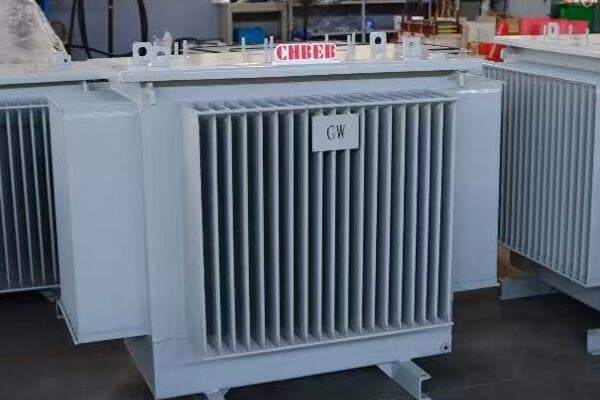
Key Areas to Watch for Specification Errors
Let’s examine the main pitfalls and how to avoid them:
- Voltage Rating Misinterpretation
- Tap Changer Confusion
- Vector Group Incompatibility
- Environmental Specification Oversights
- Capacity and Impedance Misjudgments
Voltage Rating Misinterpretation
Avoiding system mismatch:
- Double-check primary and secondary voltage ratings
- Be aware of regional voltage standards (e.g., 11kV vs. 10.5kV)
- Verify voltage tolerance ranges
I recently encountered a project where a transformer specified at 10.5kV was ordered for an 11kV system. This small discrepancy led to operational issues and required costly on-site modifications. Always verify voltage ratings with your local utility requirements.
Tap Changer Confusion
Understanding regulation capabilities:
- Clarify between No-Load Tap Changer (NLTC) and On-Load Tap Changer (OLTC)
- Verify tap range and step size
- Consider future voltage regulation needs
During a recent procurement process, we initially overlooked the type of tap changer specified. This oversight could have led to inadequate voltage regulation in an area with significant voltage fluctuations. Always clarify tap changer requirements based on your specific application.
Vector Group Incompatibility
Ensuring system harmony:
- Verify vector group compatibility with existing infrastructure
- Understand implications for parallel operations
- Consider grounding requirements
Here’s a quick guide to common vector groups:
| Vector Group | Typical Application | Key Consideration |
|---|---|---|
| Dyn11 | Distribution transformers | Suitable for most LV distributions |
| Ynyn0 | Special applications | May require additional grounding |
| Dzn0 | Industrial use | Good for unbalanced loads |
Environmental Specification Oversights
Meeting site-specific needs:
- Verify IP ratings for outdoor installations
- Consider noise level requirements for residential areas
- Check operating temperature ranges for extreme climates
Capacity and Impedance Misjudgments
Matching system requirements:
- Ensure kVA rating meets both current and future needs
- Verify impedance percentage for proper fault current management
- Consider efficiency ratings for long-term operational costs
Key points to avoid specification mistakes:
- Always cross-check voltage ratings with utility requirements
- Clearly specify tap changer type and range based on system needs
- Ensure vector group compatibility with existing infrastructure
- Pay close attention to environmental specifications for the installation site
- Carefully consider capacity and impedance for both current and future needs
In my experience, these specification mistakes can lead to significant project delays and additional costs. I recall a case where a client overlooked the noise level specifications for a transformer installed in a residential area. This oversight resulted in complaints from nearby residents and required costly retrofitting with additional sound insulation. By carefully reviewing all specifications, including environmental factors, we could have avoided this issue.
For example, in a recent industrial project, we almost procured transformers with standard impedance values without considering the high fault current levels at the site. A last-minute review caught this oversight, and we were able to specify higher impedance units, ensuring proper protection coordination and equipment safety.
As we move on to discuss top Chinese manufacturers of pad-mounted transformers, keep these common specification mistakes in mind. Understanding potential pitfalls will help you more effectively evaluate manufacturer offerings and ensure you select the right transformer for your specific project requirements.
Top 10 Chinese Manufacturers of Pad-Mounted Transformers with Detailed Specs?
Are you struggling to identify reliable pad-mounted transformer manufacturers in China that provide comprehensive specifications? You’re not alone. With China’s vast industrial landscape, pinpointing trustworthy suppliers with detailed technical information can be challenging. But which companies stand out for their product quality and specification transparency?
The top 10 Chinese manufacturers of pad-mounted transformers known for detailed specifications include CHINT, CHBEB, TBEA, XD Group, Sieyuan Electric, Taikai Electric, Tianwei Group, Hengyang Transformer, Pinggao Group, and Shanghai Electric. These companies offer a range of products from 10kV to 110kV, with capacities typically from 100kVA to 2500kVA. They provide comprehensive specification sheets, including detailed electrical parameters, mechanical drawings, and compliance certifications like IEC 60076 and IEEE C57.12.34. Many offer customization options and support international standards, catering to diverse global markets.
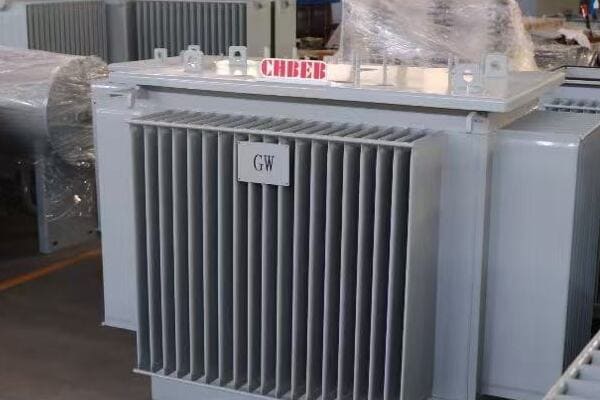
Leading Pad-Mounted Transformer Manufacturers in China
Let’s examine the top 10 companies and their key offerings:
- CHINT
- CHBEB (China Bei Er Bian)
- TBEA
- XD Group
- Sieyuan Electric
- Taikai Electric
- Tianwei Group
- Hengyang Transformer
- Pinggao Group
- Shanghai Electric
CHINT
Comprehensive standard product line:
- Voltage range: 10kV-35kV
- Key strength: Clear specifications, stable delivery times
- Notable project: Bulk delivery for Indonesian residential community
I recently worked with CHINT on a large-scale residential project. Their detailed specification sheets and prompt responses to technical queries significantly streamlined our procurement process.
CHBEB (China Bei Er Bian)
Customization specialists:
- Voltage range: 11kV/0.4kV, 22kV/0.4kV
- Key strength: IEC/CE dual certification, fully customizable specs
- Notable project: Middle East port distribution project with detailed wiring diagrams
During a recent project in the Middle East, CHBEB’s ability to provide comprehensive technical drawings and support during the approval process was invaluable.
TBEA
High-voltage expertise:
- Voltage range: 10kV-110kV
- Key strength: Experience in ultra-high voltage projects, rigorous spec verification
- Notable project: Uzbekistan basic power grid renovation
Here’s a quick overview of TBEA’s typical pad-mounted transformer specifications:
| Feature | Specification |
|---|---|
| Voltage Class | 35kV/0.4kV |
| Capacity Range | 500kVA – 2500kVA |
| Cooling Method | ONAN/ONAF |
| Vector Group | Dyn11 |
| Impedance | 4.5% |
XD Group
Utility-grade solutions:
- Voltage range: 35kV-110kV
- Key strength: Rigorous drawings, BIM integration support
- Notable project: Domestic municipal projects and African exports
Sieyuan Electric
Smart grid integration:
- Voltage range: 10kV-35kV
- Key strength: GIS + transformer combo solutions, SCADA compatibility
- Notable project: Nigerian urban power grid substation project
Key points about China’s top pad-mounted transformer manufacturers:
- They offer a wide range of voltage classes and capacities
- Many provide detailed specifications and support international standards
- Several specialize in specific applications like renewable energy or smart grids
- There’s a growing focus on providing comprehensive technical documentation
- Customization capabilities are becoming a key differentiator
In my experience, the level of detail in specifications provided by these top manufacturers can significantly impact project success. I recall a project where we initially considered a lesser-known supplier due to lower costs. However, after comparing the comprehensiveness of technical documentation, we opted for one of these top manufacturers. The detailed specs and support provided during the design phase helped us avoid several potential issues and ultimately led to a smoother installation process.
For example, in a recent smart city project, we utilized pad-mounted transformers from Sieyuan Electric. Their detailed specifications on SCADA integration and smart grid compatibility were crucial in ensuring seamless integration with the city’s advanced power management system.
As we move on to a case study focusing on CHBEB, keep in mind how detailed specifications from these manufacturers can influence your project planning and execution. Understanding the depth of information available can help you make more informed decisions and anticipate potential challenges in your transformer procurement process.
CHBEB Case Study: Parameter-Driven Transformer Design for a Middle East Housing Project?
Are you curious about how Chinese manufacturers adapt their pad-mounted transformer designs to meet specific international project requirements? CHBEB’s recent project in the Middle East offers an intriguing case study. But what makes their approach to parameter-driven design stand out, particularly in challenging environments?
CHBEB successfully delivered a customized pad-mounted transformer solution for a Middle Eastern housing project, addressing unique challenges of extreme heat and sandy conditions. The project required 11kV/0.4kV, 1000kVA transformers with specific parameters including copper windings, Dyn11 vector group, IP54 rating, and CE certification. CHBEB provided comprehensive technical drawings, CAD files, and English annotations, assisting the client through design approval and tender clarifications. They successfully delivered 45 units, with packaging including clear identification and installation guidance. This case demonstrates CHBEB’s ability to provide tailored, high-performance pad-mounted transformers with detailed specifications for challenging international projects.

Project Overview and Challenges
Let’s examine the key aspects of this case study:
- Project Requirements and Specifications
- Design and Customization Process
- Technical Documentation Provided
- Manufacturing and Quality Control
- Delivery and Installation Support
Project Requirements and Specifications
Meeting unique client needs:
- Location: Luxury villa complex in a Gulf Cooperation Council (GCC) country
- Transformer specs: 11kV/0.4kV, 1000kVA, Dyn11 vector group
- Special requirements: Copper windings, IP54 rating, CE certification
- Environmental challenges: Extreme heat (up to 50°C), sand exposure
I was directly involved in the initial consultation for this project. The client’s need for high-reliability transformers that could withstand extreme desert conditions while meeting international standards presented a unique challenge.
Design and Customization Process
Tailoring the solution:
- Enhanced cooling system design for high ambient temperatures
- Special coating and sealing for sand and dust protection
- Noise reduction features for residential area compliance
- Integration of smart monitoring capabilities for remote management
During the design phase, we worked closely with CHBEB engineers to develop a custom cooling solution that combined forced-air ventilation with a specially designed oil circulation system, ensuring optimal performance in the extreme heat.
Technical Documentation Provided
Comprehensive support package:
- Detailed technical drawings with English annotations
- CAD files for site planning and integration
- Comprehensive specification sheets aligned with project requirements
- Type test reports and CE certification documentation
Here’s an overview of the key documents provided:
| Document Type | Purpose | Key Information Included |
|---|---|---|
| Technical Drawings | Installation guidance | Dimensions, connection points, clearances |
| Specification Sheets | Performance details | Electrical parameters, environmental ratings |
| Test Reports | Quality assurance | Routine and type test results |
| Certifications | Compliance proof | CE marking, ISO 9001 |
Manufacturing and Quality Control
Ensuring product reliability:
- Rigorous quality control processes at each production stage
- Enhanced testing procedures for extreme environment tolerance
- Third-party inspections for international standard compliance
Delivery and Installation Support
Facilitating smooth project execution:
- Custom packaging designed for long-distance shipping and site conditions
- Clear labeling and installation instructions in multiple languages
- On-site technical support during installation and commissioning
Key points from the CHBEB case study:
- Customization was crucial for meeting specific environmental challenges
- Comprehensive technical documentation facilitated smooth project approval
- Enhanced quality control ensured reliability in extreme conditions
- Attention to packaging and installation support eased on-site implementation
- Smart monitoring integration added value for long-term operations
In my experience, this project exemplifies the importance of detailed specifications and customization capabilities in international transformer projects. I recall a particularly challenging aspect of the project where we needed to verify the transformer’s performance under simulated extreme conditions. CHBEB’s ability to provide detailed test reports and real-time monitoring data during these simulations was crucial in gaining the client’s confidence.
For example, six months after installation, the client reported that the transformers had maintained stable performance during a record-breaking heatwave, with ambient temperatures consistently above 48°C for over a week. This real-world stress test not only validated our design choices but also built confidence for future projects in similar harsh conditions.
As we conclude our exploration of pad-mounted transformer specifications, this case study highlights the potential for innovative, parameter-driven solutions to address complex power distribution challenges in diverse international settings. It demonstrates how choosing a manufacturer with strong technical capabilities and comprehensive documentation can lead to successful outcomes even in the most demanding project scenarios.
Final Guide: How to Review Transformer Specs Before Procurement?
Are you feeling overwhelmed by the prospect of reviewing pad-mounted transformer specifications before procurement? You’re not alone. Many engineers and project managers find this task daunting. But what if you had a systematic approach to ensure you don’t miss any critical details?
To effectively review pad-mounted transformer specifications before procurement, focus on key areas: electrical parameters (voltage, kVA rating, impedance), mechanical specifications (dimensions, weight), environmental ratings (IP grade, temperature range), and compliance certifications (IEC, IEEE standards). Verify that voltage levels and vector groups match your system requirements. Check if the kVA rating meets both current and future needs. Ensure the impedance value aligns with your short-circuit calculations. Review dimensional drawings for site compatibility. Confirm that environmental specifications suit the installation location. Always cross-reference specifications with project requirements and seek clarification from manufacturers on any ambiguities.

Essential Steps for Reviewing Transformer Specifications
Let’s break down the review process into key areas:
- Electrical Parameters Verification
- Mechanical Specifications Check
- Environmental and Safety Features Review
- Compliance and Certification Confirmation
- Documentation Completeness Assessment
Electrical Parameters Verification
Ensuring system compatibility:
- Verify primary and secondary voltage ratings match system requirements
- Confirm kVA rating meets load demands with future growth consideration
- Check impedance value for short-circuit current coordination
- Validate vector group compatibility with existing infrastructure
I recently reviewed specs for a university campus project where I noticed the vector group didn’t match the existing distribution system. This catch prevented potential parallel operation issues and saved significant rework costs.
Mechanical Specifications Check
Confirming physical suitability:
- Review dimensions for site compatibility
- Check weight for transportation and foundation requirements
- Verify cable entry locations and termination details
- Confirm cooling system type and space requirements
During a recent high-rise building project, careful review of the transformer’s dimensions helped us identify a potential clearance issue in the basement installation location early in the planning stage.
Environmental and Safety Features Review
Ensuring long-term reliability:
- Verify IP rating meets installation environment needs
- Check operating temperature range suitability
- Review noise level specifications for compliance with local regulations
- Confirm presence of required safety features (e.g., pressure relief devices)
Here’s a quick checklist for environmental specifications:
| Feature | What to Check | Why It Matters |
|---|---|---|
| IP Rating | Matches installation environment | Ensures proper protection |
| Temperature Range | Suitable for local climate | Prevents overheating issues |
| Noise Level | Complies with local regulations | Avoids residential complaints |
| Cooling Method | Appropriate for installation location | Ensures efficient operation |
Compliance and Certification Confirmation
Meeting standards and regulations:
- Verify compliance with relevant IEC or IEEE standards
- Check for required regional certifications (e.g., CE marking for Europe)
- Confirm availability of type test reports
- Review efficiency ratings for compliance with energy regulations
Documentation Completeness Assessment
Ensuring all necessary information is provided:
- Check for detailed technical drawings (wiring diagrams, outline drawings)
- Verify presence of complete specification sheets
- Confirm availability of installation and maintenance manuals
- Review warranty terms and conditions
Key points for reviewing transformer specifications:
- Carefully verify all electrical parameters for system compatibility
- Ensure mechanical specifications align with installation site requirements
- Review environmental ratings for suitability to the installation location
- Confirm compliance with all relevant standards and certifications
- Check for completeness of technical documentation
In my experience, thorough specification review is crucial for project success. I recall a case where overlooking the details of the tap changer specification led to voltage regulation issues in a remote industrial site. This oversight resulted in costly on-site modifications. By implementing a systematic review process, we’ve since been able to catch such discrepancies early and prevent similar issues.
For example, in a recent smart grid project, our detailed review of the communication interface specifications ensured seamless integration with the utility’s SCADA system. This attention to detail in the spec review process was key to achieving the project’s advanced monitoring and control objectives.
Remember, effective review of transformer specifications is not just about ticking boxes; it’s about understanding how each parameter impacts your specific project needs. By following this guide and staying attentive to details, you can significantly reduce risks and ensure the procurement of transformers that truly meet your project requirements.
Conclusion
Interpreting pad-mounted transformer specifications is crucial for successful project design and procurement. Focus on key parameters like voltage ratings, kVA capacity, and environmental specifications. Carefully review technical drawings and be aware of common specification mistakes. Choose manufacturers who provide detailed, clear documentation. By thoroughly understanding and analyzing these specifications, you can ensure the selection of transformers that meet your project’s specific needs, leading to more efficient and reliable power distribution systems.
Remember, at chbeb-ele, we’re not just sharing information – we’re empowering you to be part of the solution in creating a secure, clean, and efficient energy future. Let’s continue
Free CHBEB Transformer Catalog Download
Get the full range of CHBEB transformers in one catalog.
Includes oil-immersed, dry-type, pad-mounted, and custom solutions.
Quick Message
Request A free quote
We'd like to work with you
- +86 15558785111
- [email protected]
- +86 15558785111
What We Do
CHINA BEI ER BIAN (CHBEB) GROUP, with 218 million in registered capital, originated from Beijing Beierbian Transformer Group. Headquartered in Beijing for R&D, it operates major production bases in Nanjing and Yueqing, producing high-quality products.
Latest Product
address
BeiJing
No 3,RongJing East Road,BeiJing Economic Technological Development Area,BeiJing,China
JiangSu
No 7️Xiangfeng Road,Jiangning,NanJing,JiangSu,China
WenZhou
No.211, Wei 16 Road, Industrial Zone, Yueqing, Wenzhou, Zhejiang, China.
XiangYang Industrial Zone ,YueQing,WenZhou,ZheJiang,China
contact us
- [email protected]
- +86 13057780111
- +86 13057780111
- +86 15558785111
Copyright © Bei Er Bian Group


